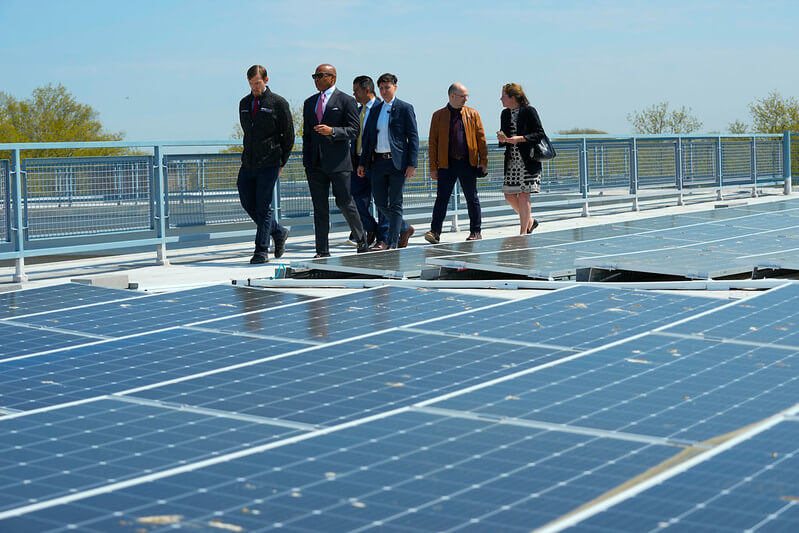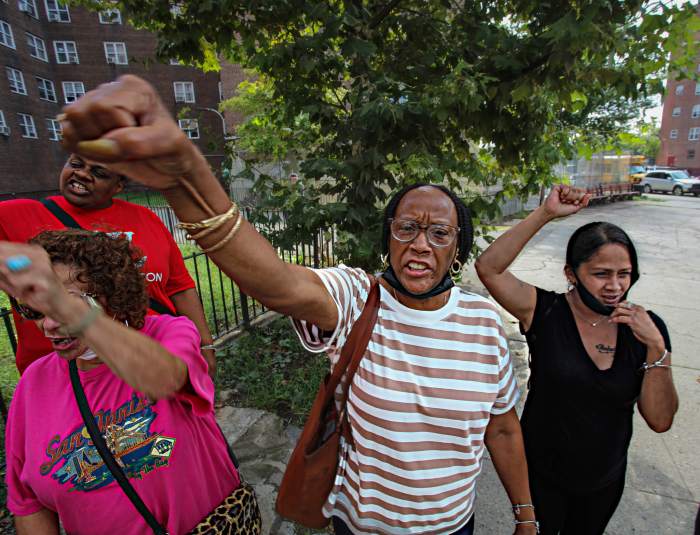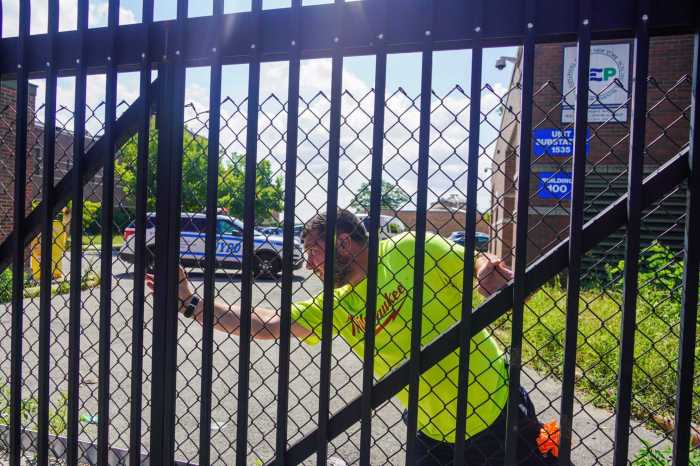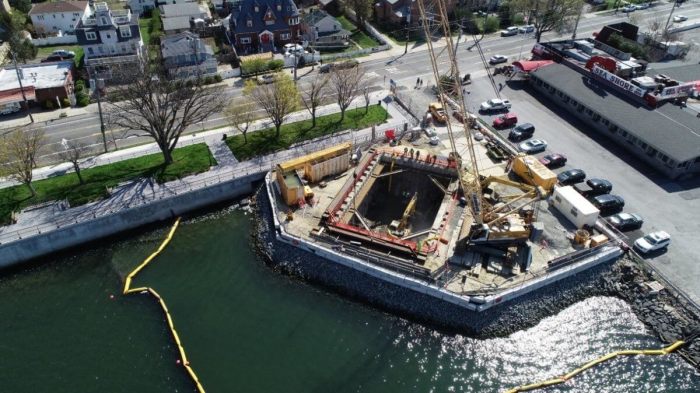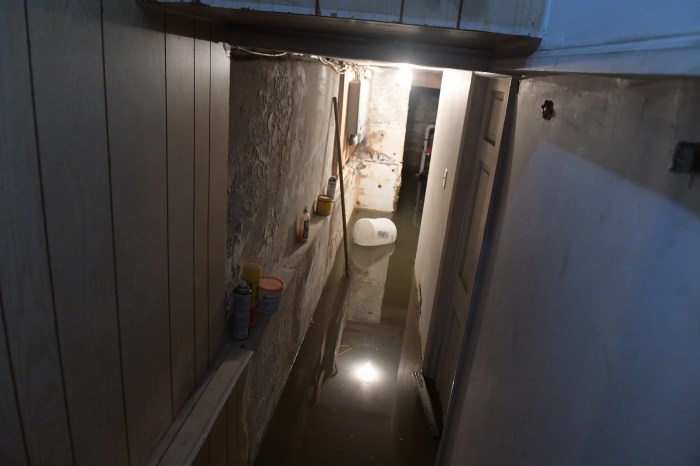New York City will begin taking its carbon emissions targets into account as part of the budget process and launch a program to subsidize solar panel installations for up to 3,000 low-income homes as part of a new long term climate plan Mayor Eric Adams’ office released on Thursday.
The plan, dubbed “PlaNYC: Getting Sustainability Done,” is the fifth such climate roadmap released by the city since it became legally required to put out a new one every four years. It was crafted by the New York City Climate Cabinet — a panel made up of 35 administration officials, outside stakeholders, City Council Speaker Adrienne Adams and council Environmental Protection Committee Chair James Gennaro.
“We have taken our climate plan to the next level with our new PlaNYC: Getting Sustainability Done,” Adams said during a press conference to unveil the scheme at the Frank J. Macchiarola Educational Complex in southern Brooklyn.
“This is the GSD PlaNYC, a comprehensive citywide strategy to increase resiliency and protecting our infrastructure and save lives,” he added. “And one rooted in practical, actionable steps that will help all New Yorkers plan.”
New Yorkers are already familiar with the devastating effects of extreme weather events linked to climate change, Adams said, after suffering through destructive storms over the past decade like Hurricane Sandy in 2012 and Tropical Storm Ida in 2021.
“We’ve all lived through it, from Hurricane Sandy to Tropical Storm Ida, we know that lives are at stake,” the mayor said. “We lost fellow New Yorkers, our brothers and sisters due to a storm. They died while in their basement apartments. And many were fearful because of potential drowning because of the heavy rain.”
According to city Department of Environmental Protection Commissioner (DEP) Rohit Aggarwala, the plan directs the Mayor’s Office of Management and Budget (OMB) to begin taking a new approach to the city’s budgeting process called “climate budgeting” starting in January of 2024. The mayor first announced the initiative in his State of the City address this past January, Aggarwala said.
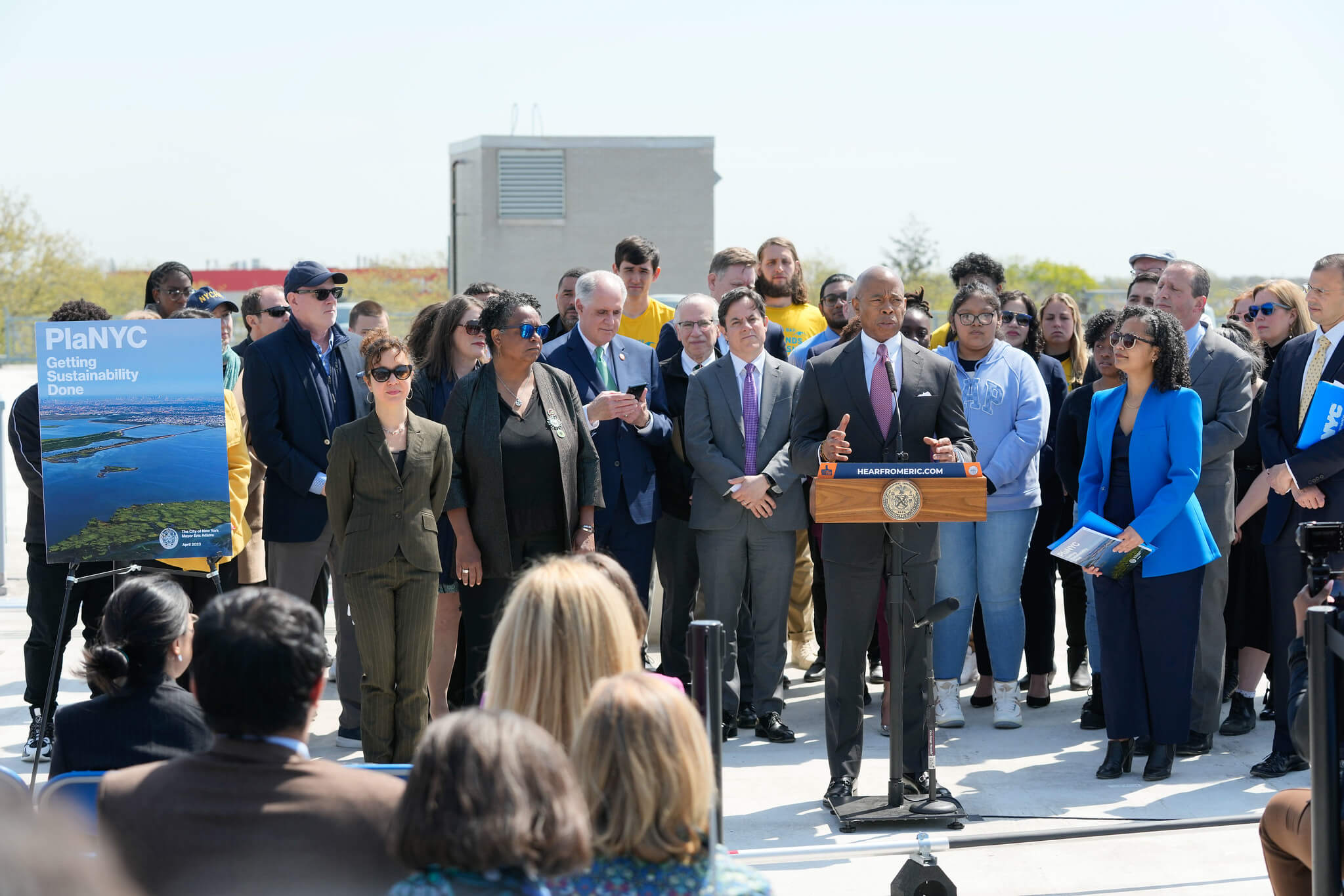
Under the initiative, Aggarwala said, OMB will begin looking at the carbon impacts of city agency budget proposals and how those will affect the city’s overall goal of achieving carbon neutrality by 2050. That means the city will look at how endeavors like building more affordable housing, maintaining infrastructure and procuring food for students will affect its emissions reductions targets.
“This is about as wonky as it gets, but anybody who understands city government understands that the budget shapes so much and there is that old line about ‘show me your budget and I’ll show you your values,’” Aggarwala said. “This is massive because over time, this will ensure that the $100 billion that we spend every year in the operating budget and the one hundred plus billion in our capital plan, go towards the right climate goals.”
Along with city Comptroller Brad Lander’s office, City Hall is also launching a “Public Solar Initiative,” a new public entity that promises to install solar panels on the roofs of up to 3,000 low-income one to four-family homes at little to no cost over the next four years. The administration plans to fund the program with yet-to-be-secured federal funds that will become available through the Greenhouse Gas Reduction Fund.
Public Solar would give homeowners the opportunity to lease their rooftops to the city for solar panel installation at no cost, while allowing them to reap some of the financial benefits from the energy the panels produce, according to a report from Gothamist.
Lander said the program will make solar panels available to communities that have traditionally not been able to use them because of the prohibitive cost of installation — which can run between $15,000 to $25,000.
“We plan to apply to its Greenhouse Gas Reduction Fund for the resources to make it possible for 3,000 homeowners to install rooftop solar, in many cases, at no cost whatsoever to them,” Lander said. “Because the city will come and do it and that will make it possible for low and moderate income homeowners to get rooftop solar.”
As a way to better prepare the city’s coastal regions for sea level rise on the horizon, Aggarwala said, the administration is looking to create an institution that can utilize federal and state funds to buy coastal properties off of people looking to move out of vulnerable areas and repurpose the land for other uses.
Aggarwala said the administration is currently working to identify parts of the city that are most vulnerable to flooding and will likely target a future buy-out program to those regions.
“We have to create an institution that will actually make it possible for New York City to provide an alternative for homeowners where we the city cannot effectively protect them from flooding,” Aggarwala said. “And make it possible so that we can channel again, the amazing amounts of federal and state money that are available to procure some of that land and turn it into other protected uses.”



